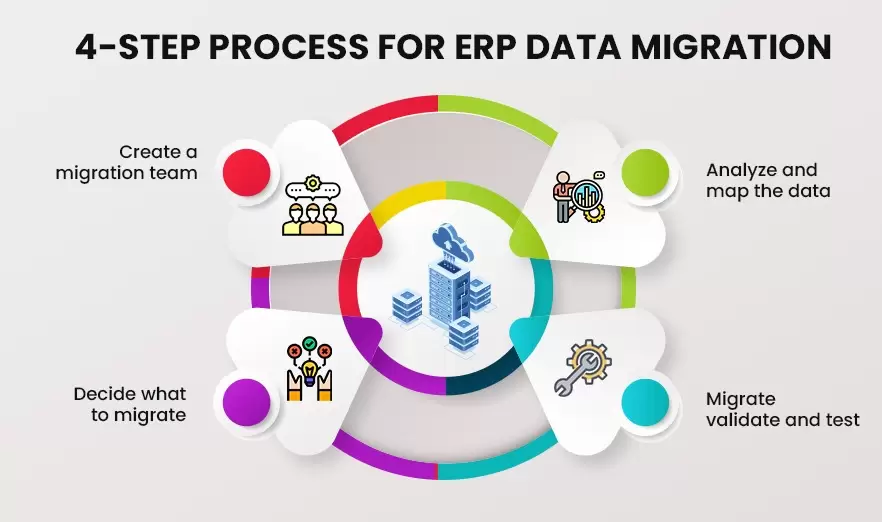
At iTech India, our long experience with implementing ERP solutions for schools and colleges, places us in a good position to highlight the implementation mistakes that institutions must beware of.
Mistake #1: The Education ERP with the most features gets chosen
An education ERP will provide your institution with a software architecture that will improve the information flow within different functions. This does not always mean a school management system with more bells and whistles than you need. However, many education institutions fall into this trap and end up with an ERP that is a maze of features that most of the end-users will not even know how to use. Even with a time-sucking extended on-site training, you might end up with a largely confused set of primary users – for instance, the admin for fee management system or library staff for Library Management System.
There is a way to tackle this.
Create a checklist of features by consulting the people who will actually be using the software. Then get the Education ERP vendor to explain to you how exactly their software solution will address these features and how will it improve on the current processes. The time spent on this will be worth its weight in gold when your implemented software improves efficiency.
Mistake #2 Is your newly automated process able to talk to existing software
The purpose of the software is to cut down on time-consuming manual processes. If you are automating processes for the first time or already have existing software then this is of high importance. You must make sure that all current and future automation will be able to talk to each other so that you can maintain a centralized system.
For instance, your college might wish to invest in online fee payment and account management software and later add on exam software, library management software or hostel management software. Keep in mind if you purchase these systems from different vendors, they might be built on different platforms and programming languages. It is essential to make sure that all new solutions can integrate with existing or future upgrades. After all, a school management system is made up of different independent modules but they must all be able to pass information from one module to the other.
Mistake #3 Problems in migration of data
Schools and colleges have a huge amount of data. There are two different challenges here:
- If the institution was in manual mode till now, there will be more effort needed to extract the data from a multitude of physical records. The question is also how far do you want to go back and store the information in a consistent format into a digital database. The cost of migration of data by first automating years of records, will get included in the ERP implementation budge
- However, if the institution is moving from an older to a more modern system, data migration and reconciliation may be easier. However, in the later case, the whole ERP implementation process can go wrong if the core data, functionality, and integration to other data sources is not effectively migrated into the new system.
Your technology partner must first have their data migration experts do a full migration assessment so that no horrible surprises are thrown up later. This will require clear cut business requirements to be provided. It definitely would not hurt if you have a technical advisor on your side.

Mistake #4 Not making ease-of-use a top priority, else it won’t get used
Here is why ease of use is an important factor when it comes to choosing an education ERP. Deploying new ERP software is an investment into the promise of business benefits – increased operational efficiency, greater employee productivity, and improved visibility of performance. These three benefits are expected to bring a calculated return of investment in a specific period of time.
The expectation is that there will be a quick adoption of the new software across the board. Here is where the challenge lies – If the new ERP is too cumbersome to understand, the concerned staff or students will resist using the new system because of the complexity, so the expected ROI might take longer to achieve, if ever. Of course, training of employees is an expected part of ERP implementation but only through use will your staff really understand the new functions.
A few quick pointers to identifying an ERP that is user-friendly
- Does the ERP interface require users to learn many new commands or processes to perform regular tasks?
- The less training required to use the software is directly proportional to employee acceptance.
Does the ERP Software you are evaluating have these user-friendly features? It might be time to talk to iTech’s team of ERP experts and get a demo of Edumate, our one-stop education ERP solution implemented in top schools and colleges.
Mistake #5: Not fully understanding the benefits and risks of cloud deployment
The pandemic has driven home the need to have software solutions accessible from anywhere and not just on-premise. This is an important reason why education ERP is mostly deployed on the cloud. The institution does not need to bother about investment in hardware or upgrading the servers. This is handled by the cloud servers themselves like Amazon AWS, Google Cloud or Microsoft Azure.
You must be aware that cloud computing has its own risks. Because you are moving your sensitive data to a cloud environment, connected by the internet, the possibility exists that hackers can squirrel in and hack your data. Malware attacks are always a threat. Don’t ignore a cybesecurity risk assessment to identify possibile vulnerabilities. There is more than can be covered here but never ignore this.
Finally, it is important to get proven professionals to implement your education software.


